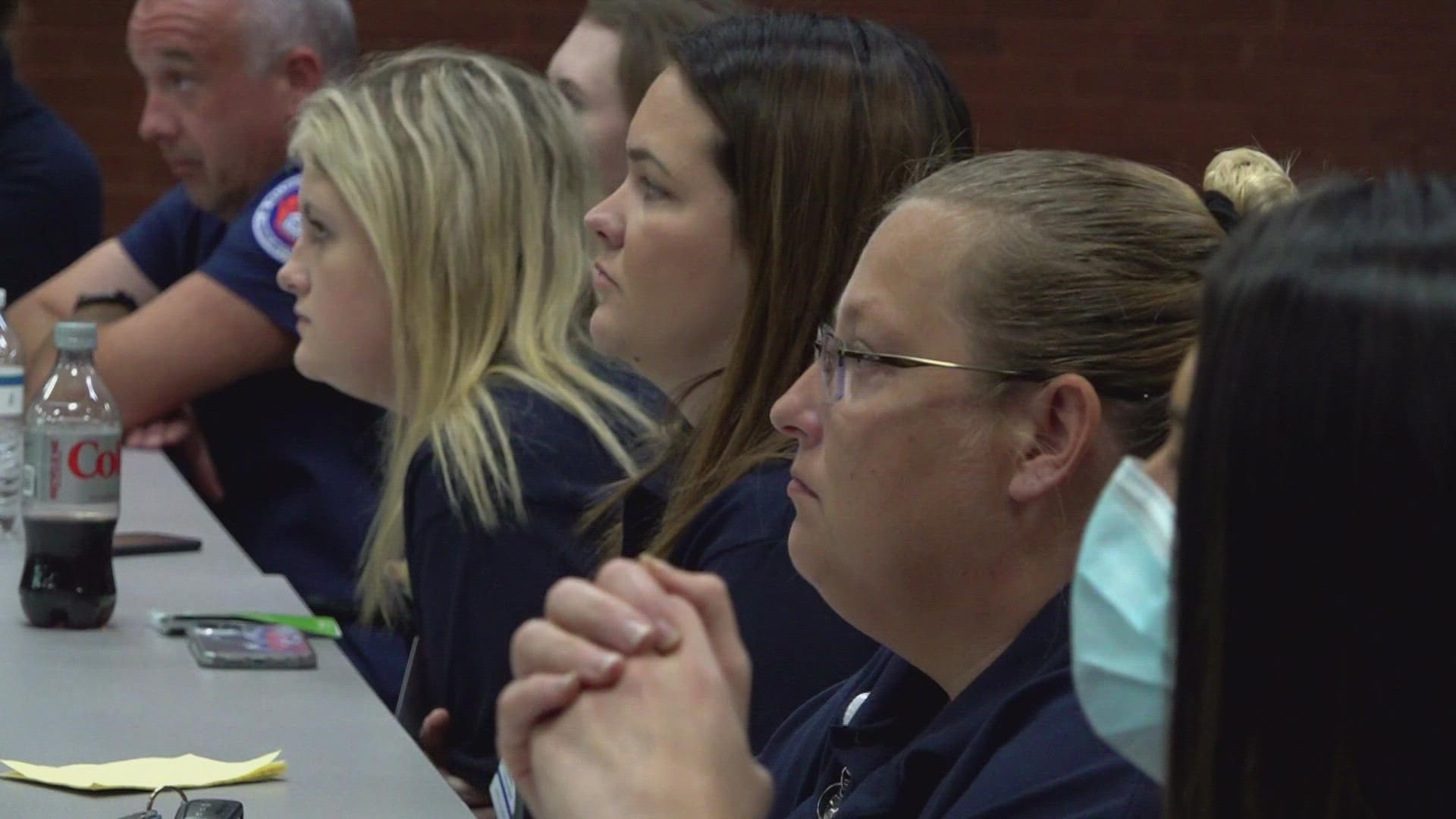KNOXVILLE, Tenn. —
Nurses are the backbone of the healthcare system. They meet dozens of people every day, establish rapport, and lend a listening ear. That's why the Knoxville Police Department believes they're a key part in the fight against domestic violence.
Most nurses get into the profession for the same reason.
"Taking care of people is one of the best things that you can do with your time," said a nursing student at Walters State Community College, Shatonna Blackmon.
Taking care of people also means paying close attention to the things that often go unseen.
"Physicians are very busy, I get that, and they're trying to come in and out of the room. But the nurses have the time to spend with the patients and can find out more about their story," said Dr. David Kitts with the KPD Special Crimes Unit.
That's why he is helping to teach the next generation of nurses the signs of domestic abuse, specifically the signs of strangulation.
Strangulation is a major concern in domestic abuse cases. Many consider it a severe form of power and control that an abuser may take over someone. Dr. Kitts explained that it demonstrates the abuser's control over the victim's next breath. It also often requires the abuser to look into the eyes of the victim during the maneuver.
"Strangulation is so dangerous. Within 72 hours after a strangulation event, a person could die from it," Dr. Kitts said.
Dr. Kitts identified several ways these future nurses can spot the signs of strangulation. Those include red marks (in the shape of half moons on the neck), claw marks (scratches on neck and chest), pressure bruises (which could be on the neck, jawline, or behind the ears), a discolored, bruised tongue, or broken blood vessels or petechiae in the eyes, face or neck.
"When we're in the hospital. The doctors may not recognize those signs. But as nurses, we spend a little bit more time with these people," Blackmon said.
Dr. Kitts said if you know what to look for, these things are pretty easy to spot. However, more than 80% of the time, there will be no visible injury for healthcare professionals to document.
Dr. Beth Cruz is an associate nursing professor at Walter State Community College. She said she's seen all sorts of domestic abuse cases over her nursing career.
"I worked in the emergency room for 17 years," Dr. Cruz said. "And in those 17 years, I realized how much I did not know about domestic violence. I've learned so much more about domestic violence just in the past 10 years."
One of the things she learned is how to ask tough questions.
"They may not have any signs or symptoms," she said. "So, you have to ask. You have to question a little bit further."
When nurses are able to detect and identify signs of abuse, they can start involving other agencies and organizations to rescue the victim.
"If hospitals are able to say the person was strangled and they have evidence for it, it really helps us out," Dr. Kitts said.
Nurses can also point the victim to places like the Family Justice Center, which can help walk them through the recovery process.
"It's important," Blackmon said. "A lot of times you're the most accessible person for these people to reach out to."
If you or a loved one is a victim of domestic violence, call the local hotline at 865-637-8000. Advocates can help walk you through the next steps and get connected with resources.

